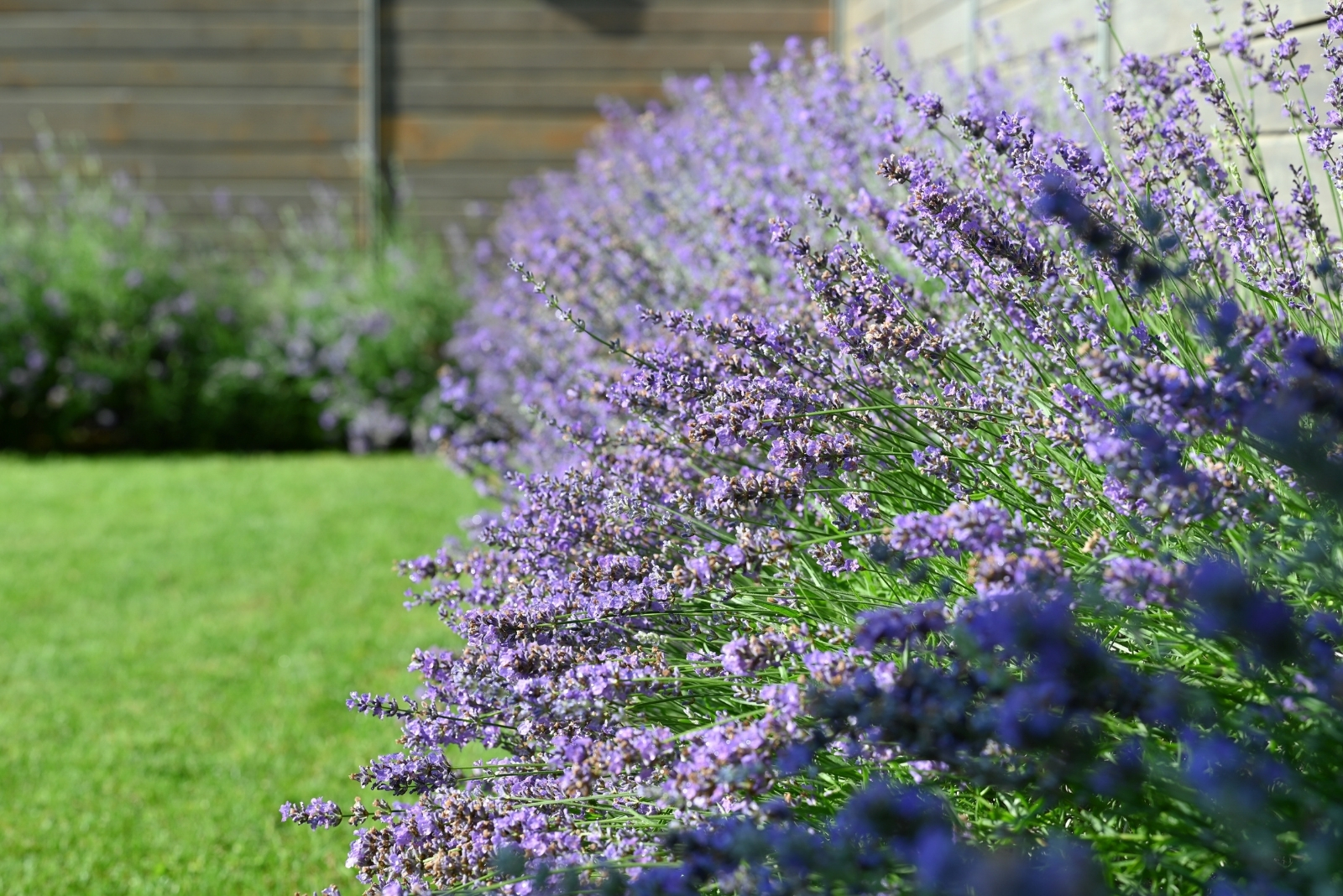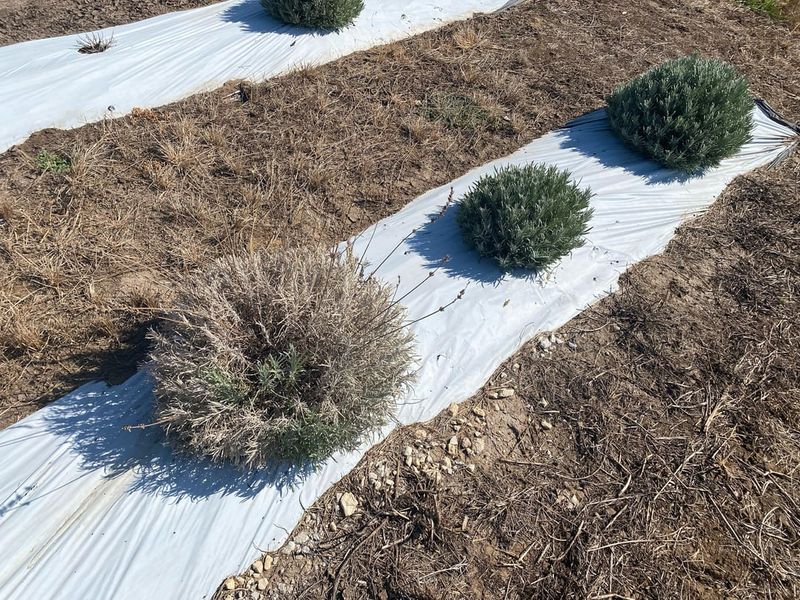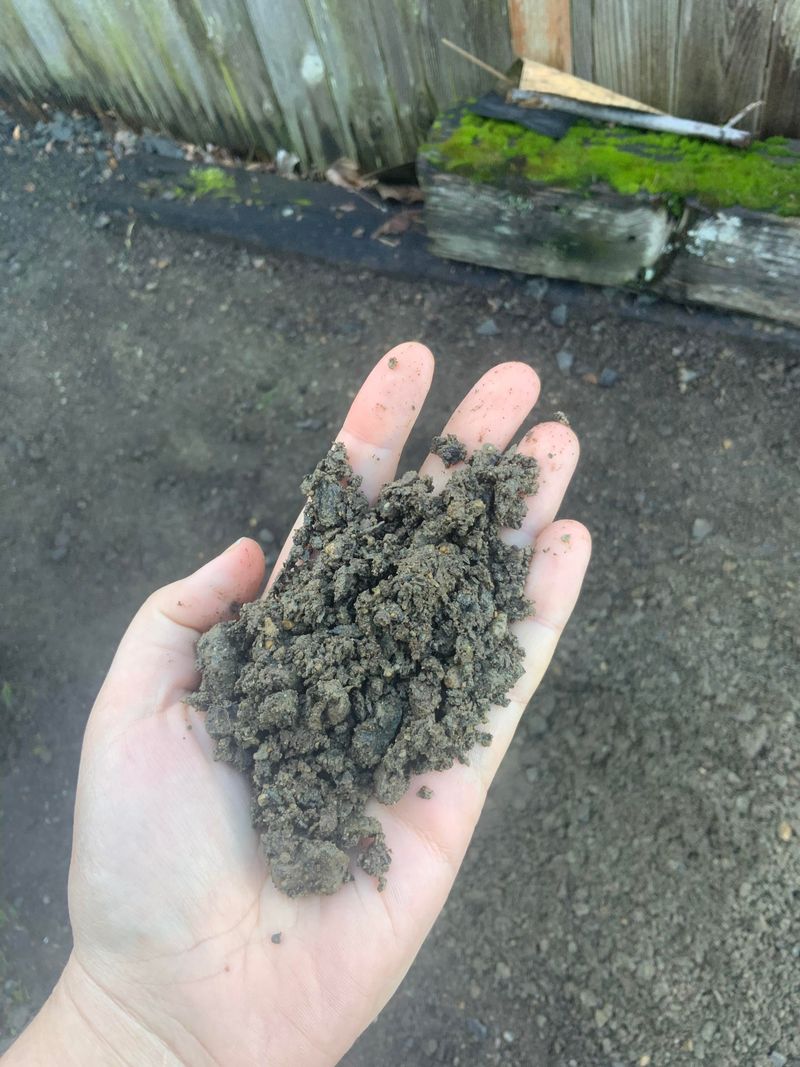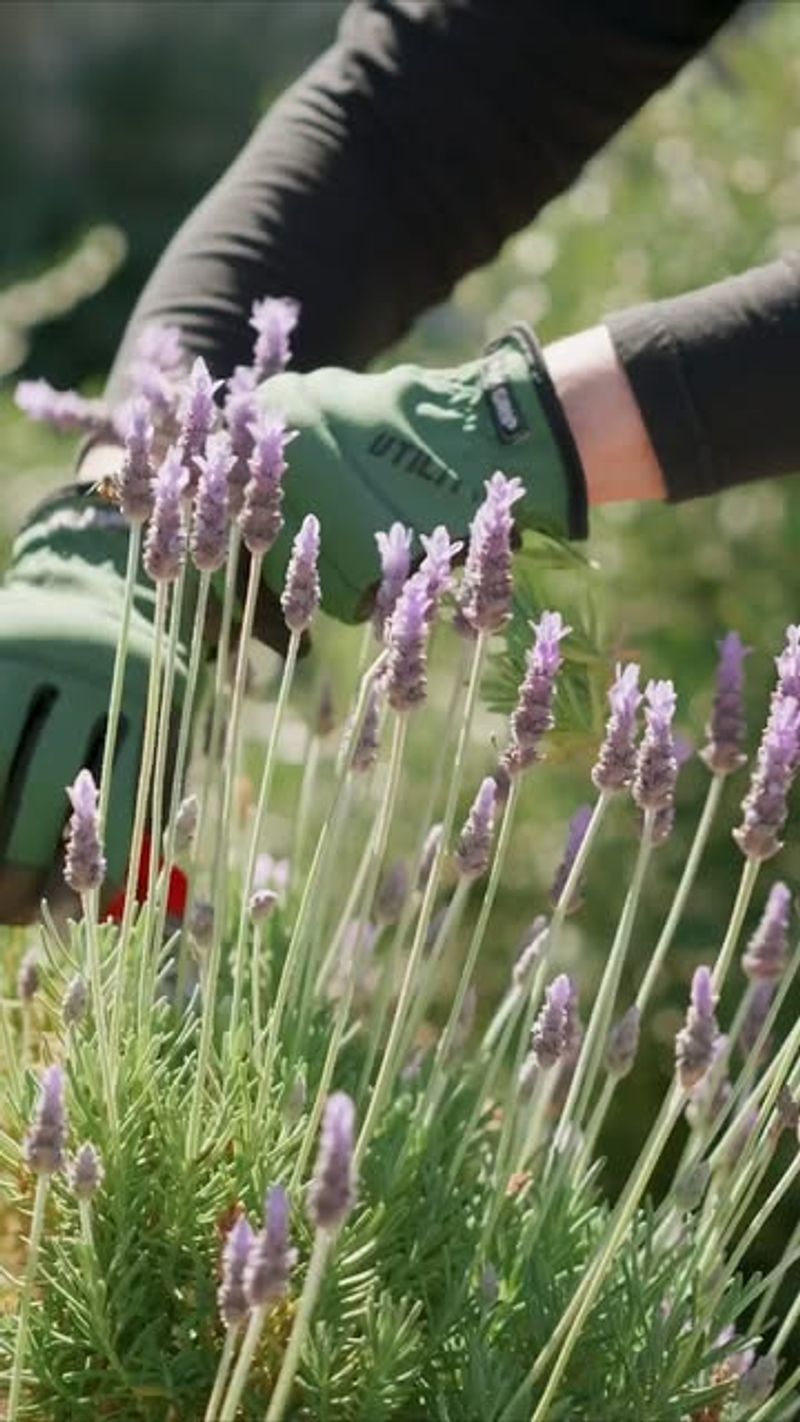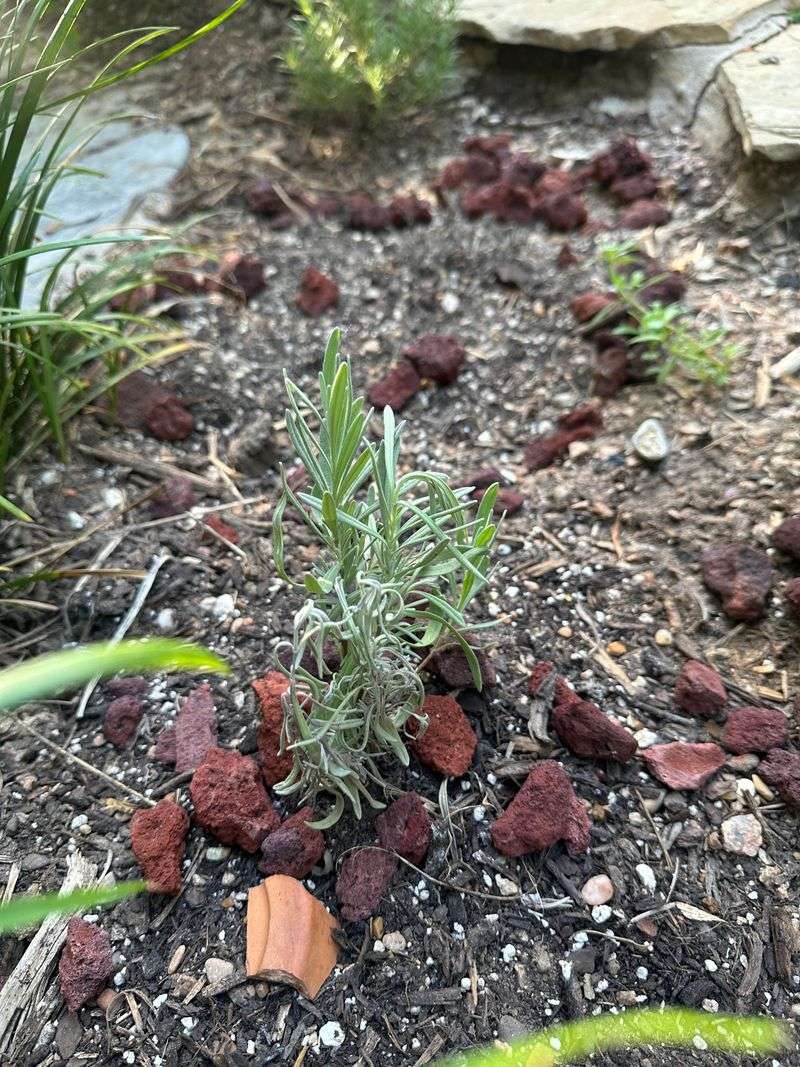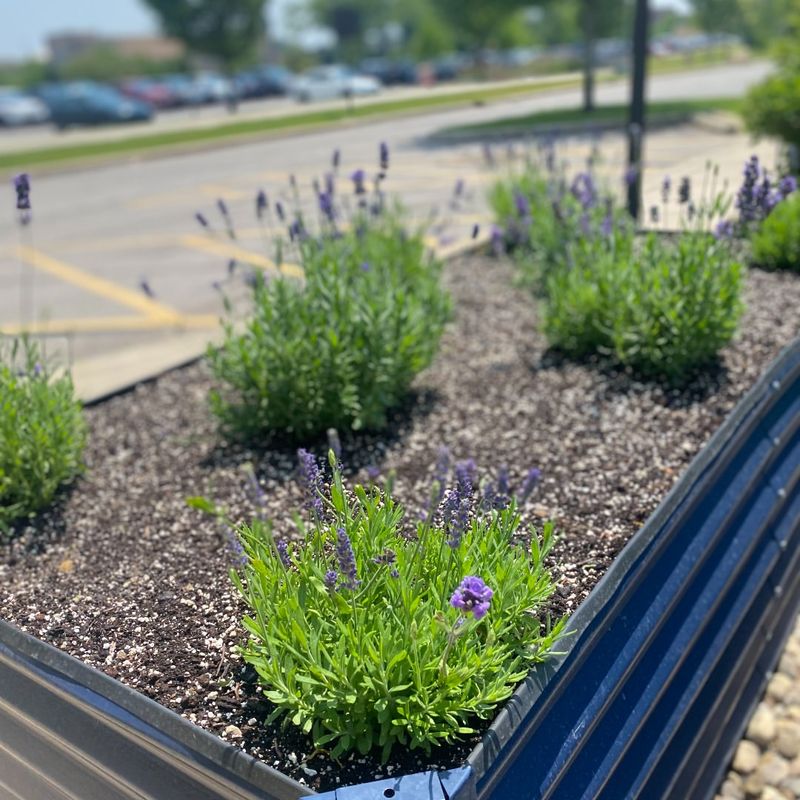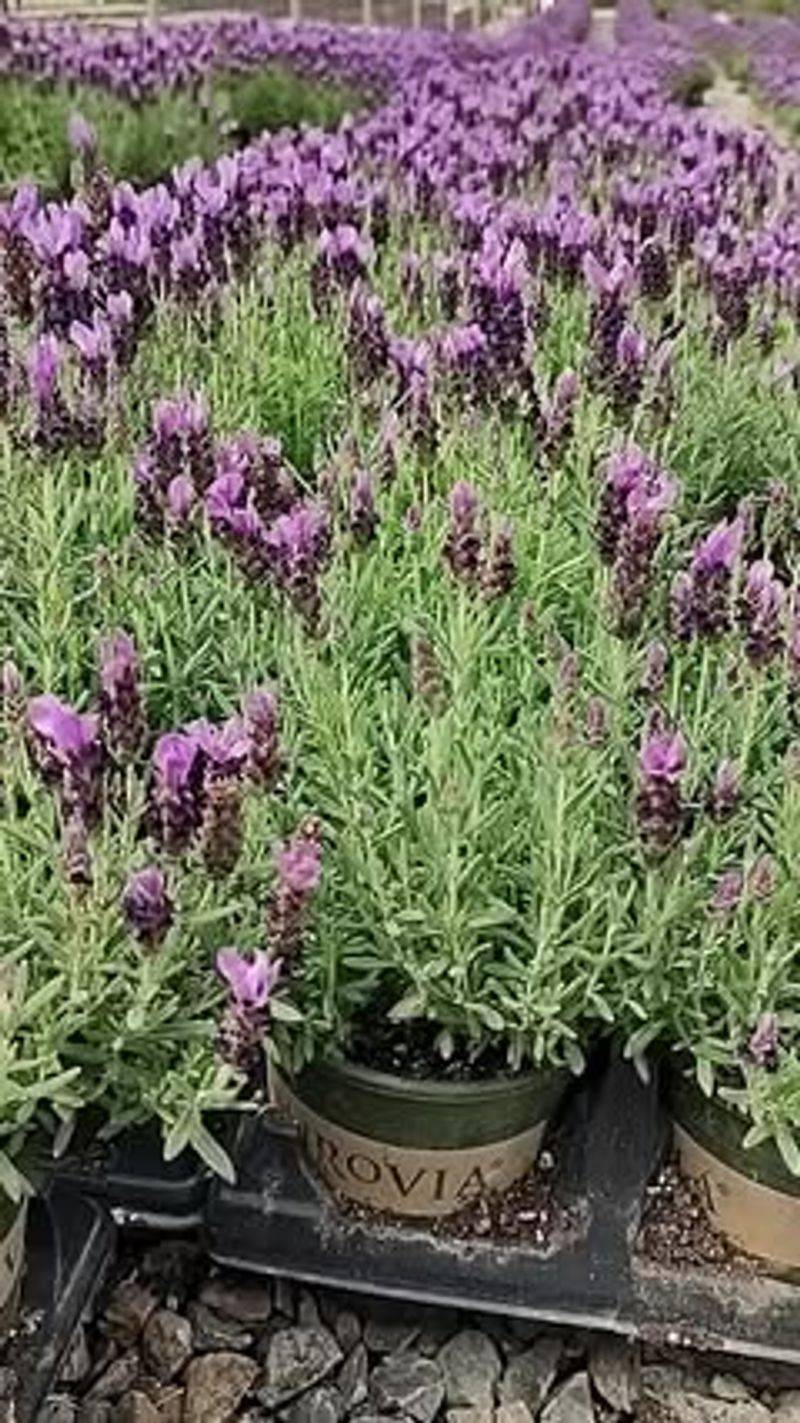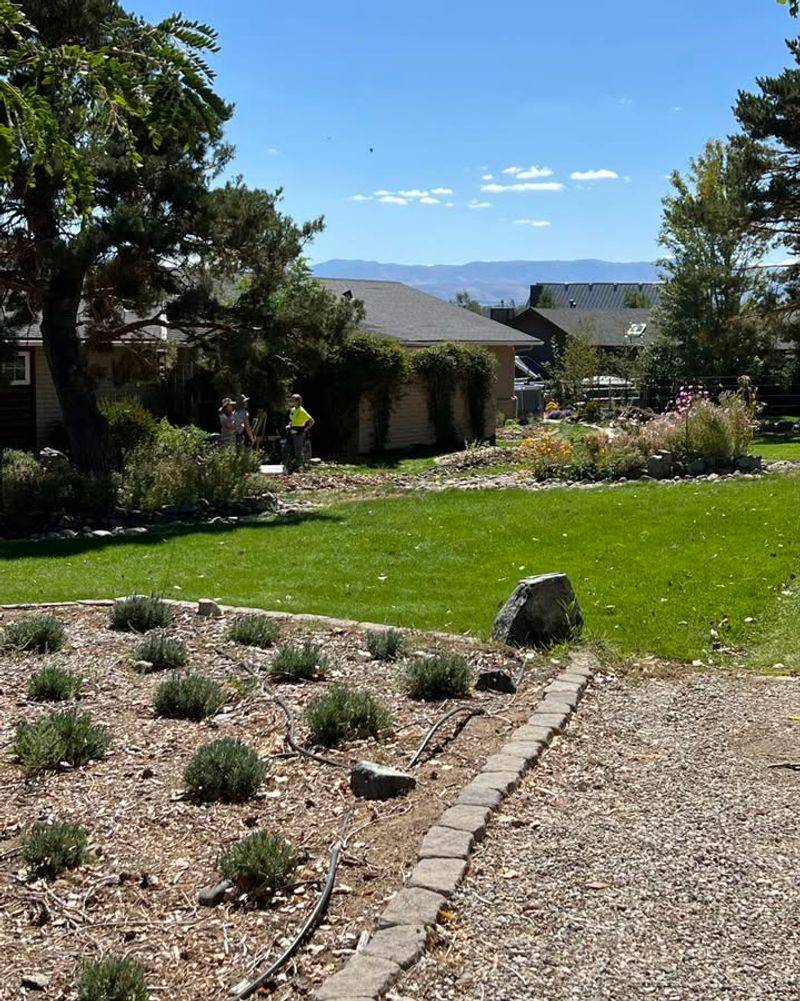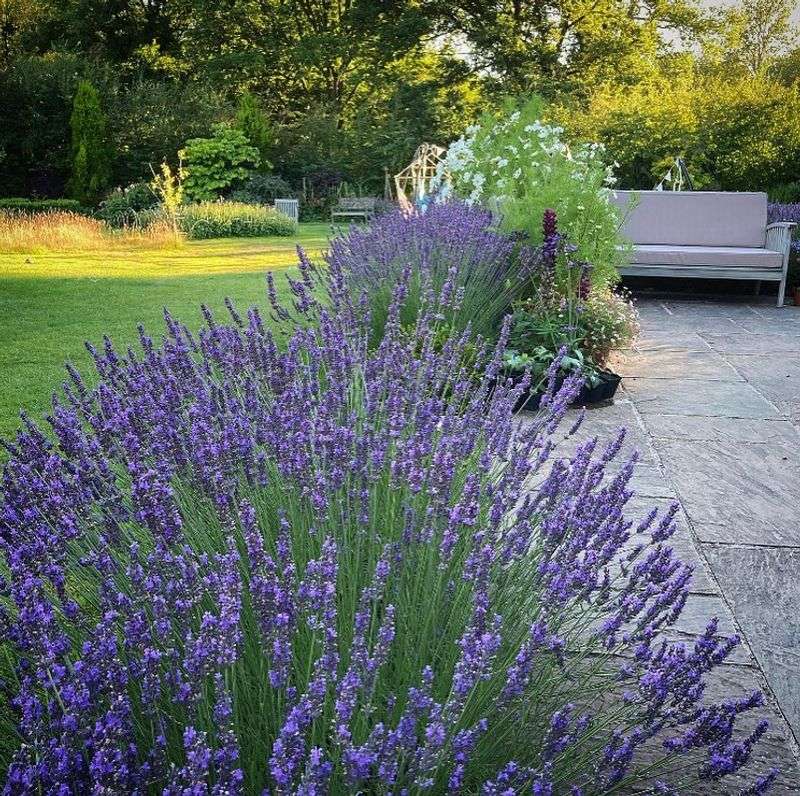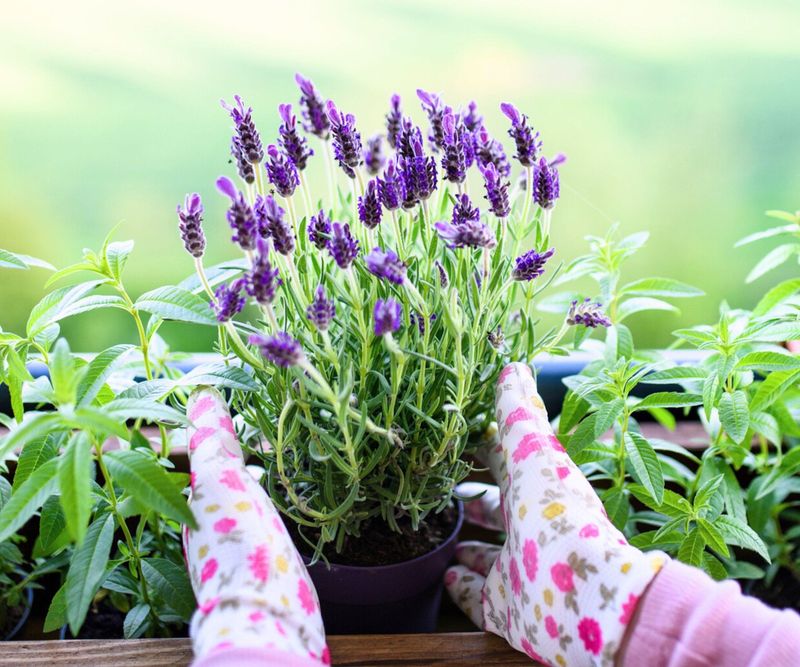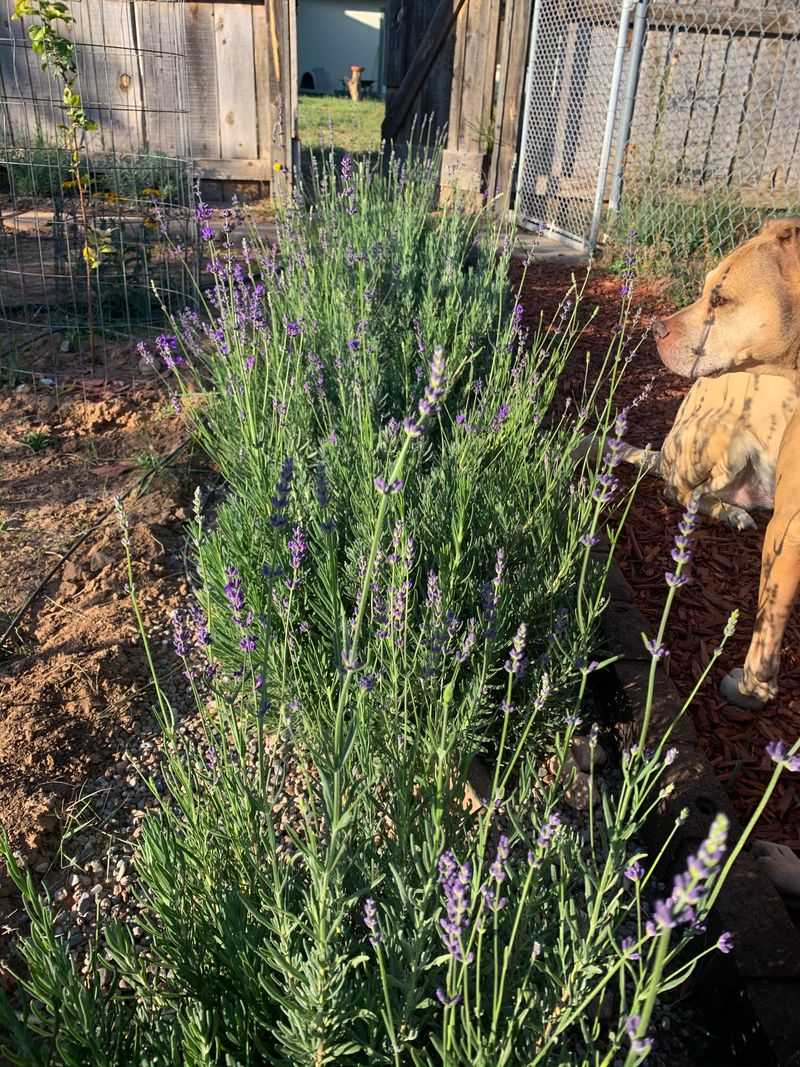Lavender thrives when Texas soil gets a little extra love. Rich, well-draining soil means more fragrant flowers and healthier plants.
Small tweaks now pay off with a garden full of purple blooms later. Here are ten ways to boost your soil for lavender success in Texas.
1. Add Limestone to Raise pH Levels
Lavender absolutely loves alkaline soil, and many Texas gardens have soil that’s too acidic for these Mediterranean beauties. Adding crushed limestone or dolomite lime helps raise the pH level to somewhere between 6.5 and 8.0, which is the sweet spot for lavender growth.
You can test your soil with an inexpensive kit from any garden center across Texas. Mix the limestone into the top six inches of soil during fall or early spring for best results.
2. Mix in Coarse Sand for Better Drainage
Heavy clay soil is common throughout Texas, but lavender roots hate sitting in water and will quickly rot if drainage is poor. Blending coarse construction sand or builder’s sand into your garden bed creates air pockets that let water flow through easily.
Aim for a mix that’s about 30 percent sand to 70 percent existing soil. Never use fine beach sand because it actually makes drainage worse by filling in those important air spaces.
3. Incorporate Pea Gravel for Root Health
Pea gravel works wonders for creating the rocky, fast-draining conditions that remind lavender of its native Mediterranean hillsides. Mixing these small, rounded stones into your planting area prevents water from pooling around sensitive roots.
Texas gardeners often add a two-inch layer of pea gravel at the bottom of planting holes before setting lavender plants in place. This technique mimics the natural rocky terrain where wild lavender flourishes across southern Europe.
4. Apply Compost Sparingly for Nutrients
While most plants love rich, heavily composted soil, lavender actually prefers leaner conditions with fewer nutrients. Too much organic matter in Texas gardens can hold excess moisture and create overly fertile soil that produces leafy growth instead of abundant flowers.
Use just a thin one-inch layer of well-aged compost mixed into the planting area. This provides gentle nutrition without overwhelming your lavender plants or compromising the drainage they desperately need.
5. Create Raised Beds for Superior Drainage
Raised beds solve multiple soil problems at once for Texas lavender growers dealing with heavy clay or poor drainage. Building beds that sit 8 to 12 inches above ground level lets you control the exact soil mixture while ensuring water never accumulates around plant roots.
Fill your raised beds with a custom blend of native soil, sand, and gravel. Many successful Texas lavender gardeners swear by this method, especially in areas with challenging soil conditions.
6. Avoid Nitrogen-Heavy Fertilizers
Lavender evolved in nutrient-poor Mediterranean soils, so pumping your Texas garden full of nitrogen-rich fertilizers actually backfires. High nitrogen levels encourage soft, floppy green growth at the expense of those fragrant purple blooms you’re working so hard to achieve.
Choose a balanced or low-nitrogen fertilizer if you feed at all, applying it very sparingly once per year. Most established lavender plants in Texas thrive without any supplemental fertilizer whatsoever.
7. Mulch with Gravel Instead of Organic Materials
Wood chips and bark mulch hold moisture against plant stems, which is exactly what lavender hates in the hot Texas climate. Switching to a gravel or crushed stone mulch reflects heat, improves air circulation, and prevents the crown rot that kills so many lavender plants.
Spread a two-inch layer of light-colored gravel around your plants, keeping it slightly away from the main stems. This simple change dramatically reduces disease problems throughout humid Texas summers.
8. Improve Air Circulation Through Spacing
Crowded lavender plants in Texas gardens suffer from poor air movement, which leads to fungal diseases and weak root systems in the soil below. Planting lavender at least two to three feet apart lets air flow freely around each plant while giving roots room to spread through your improved soil.
Proper spacing also means each plant gets adequate sunlight, which helps soil dry out quickly after watering or rain. This breathing room is essential for healthy lavender throughout Texas’s humid growing season.
9. Test and Monitor Soil Moisture Regularly
Even with perfectly amended soil, Texas gardeners sometimes water lavender too frequently because they’re used to caring for thirstier plants. Using a simple moisture meter lets you check several inches down to see if the soil is truly dry before watering again.
Lavender roots prefer to dry out completely between waterings, even during hot Texas summers. Regular monitoring prevents the overwatering mistakes that cause more lavender deaths than any other problem gardeners face.
10. Amend Soil Annually for Long-Term Success
Soil conditions change over time as organic matter breaks down and heavy rains compact the earth in Texas gardens. Refreshing your lavender beds each spring with a light addition of sand, gravel, or limestone maintains the drainage and pH levels these plants need.
Gently work amendments into the top few inches of soil without disturbing established roots. This yearly tune-up keeps your Texas lavender thriving and blooming abundantly for many seasons to come.

